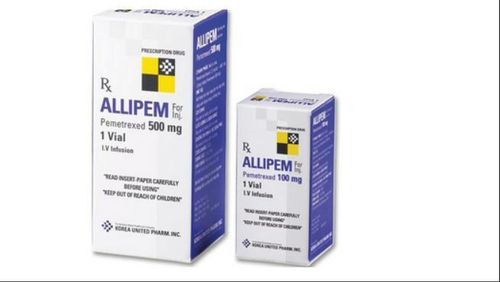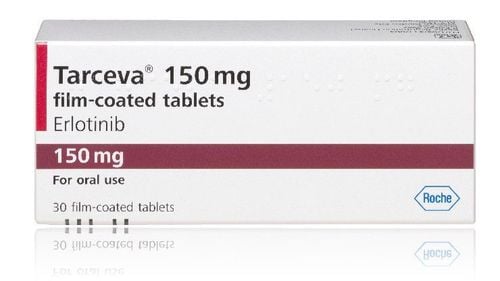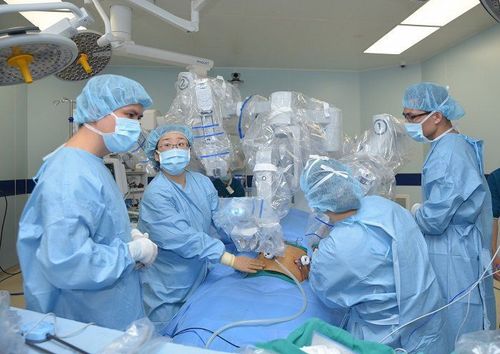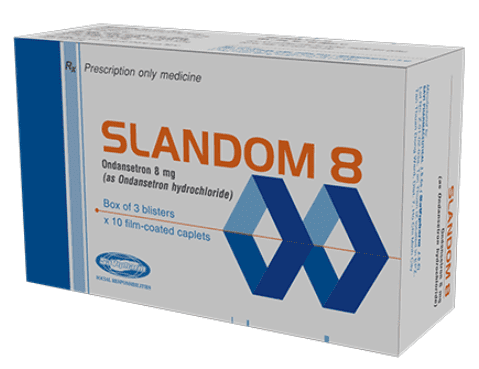This is an automatically translated article.
The article was consulted with Dr. To Kim Sang - Oncology Center - Central Park International General Hospital.Small cell lung cancer has a very high risk of death if not detected early and treated promptly. However, with the continuous development of medicine, most cancers can be controlled and prolong the life of patients.
1. What is small cell lung cancer?
Lung cancer is a malignant cancer that occurs when cancer-causing cells grow aggressively in the lung tissues. These cells proliferate rapidly and are difficult to control, gradually forming malignant tumors and have a very high ability to invade other organs if not treated promptly. Lung cancer usually has two main types, including small cell lung cancer (SCLC) and non-small cell lung cancer (NSCLC).For small cell lung cancer (SCLC) also known as small cell carcinoma. This type of cancer accounts for about 15% of lung cancers, and it usually comes in two main forms, including small cell carcinoma and mixed small cell carcinoma.
People who have a history of smoking, or are heavy smokers, have a higher risk of developing small cell lung cancer. This type of cancer is "aggressive," grows quickly, and spreads easily to other areas of the body. Therefore, patients with advanced SCLC often find it difficult to cure the disease completely.
2. Stages of small cell lung cancer
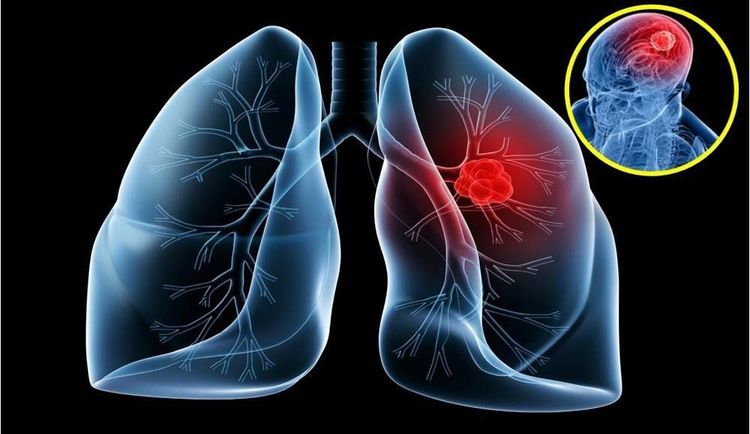
Giai đoạn mở rộng là các tế bào ung thư phát triển mạnh mẽ và còn có thể di căn sang khu vực khác trong cơ thể
Localized stage: in this stage, the cancer is present in only one lung or in the mediastinal lymph nodes. The percentage of patients with cancer at this stage is very low (about 30%), in addition, many cases are not detected through tests even though the tumor has spread beyond the chest area. Limited-stage small cell lung cancer is usually treated initially with chemotherapy combined with radiation therapy. After that, the patient will continue to receive radiation therapy to the brain to prevent the tumor from spreading to the brain, giving the patient a chance to get rid of the cancer. Invasive stage: Cancer cells have grown strongly and have invaded the other lung, and may even spread to more distant areas of the body, such as the brain, liver, bones or adrenals. Most people with small cell lung cancer are diagnosed when the cancer has already reached this stage. Cancer in this stage is often much more severe than in the early stages, so it is very difficult to completely remove the malignancy. Treatments carried out during the endemic phase are intended only to alleviate the symptoms of the disease and to prolong life.
3. Treatment of small cell lung cancer
3.1 Is small cell lung cancer curable? Small cell lung cancer is a malignant cancer that threatens the patient's life if not detected and treated promptly. This type of cancer usually progresses faster than non-small cell lung cancer (NSCLC), so the chances of a cure are not high. Treatments such as radiation, chemotherapy or surgery cannot eliminate cancer cells, they can only shrink tumors and stop their growth in the body.In addition, treatments for small cell lung cancer also help patients improve quality of life and provide higher survival rates. Survival rates for each patient will vary and depend on factors such as the patient's age, health status, and course of the disease. If cancer is found in its early stages, the survival rate is about 23% after five years. In cases where the cancer has spread to nearby organs, the survival rate drops to about 14% and about 2% if the cancer has spread to more distant sites in the body.

Phẫu thuật cắt bỏ thùy là phương pháp điều trị ung thư phổi tế bào nhỏ phổ biến
Surgery: this is usually used in cases of small cell lung cancer. there is only one tumor in the lung and the cancer has not spread to other sites. Several types of surgery may be performed such as:
Lobectomy (ideally for small cell lung cancer) Pneumonectomy Surgery to remove a segment of a lobe of the lung (Segmentectomy) Surgery During the surgery, the patient will be under general anesthesia. The success and effectiveness of this method largely depends on the health status of the patient before surgery. However, this surgery can also bring some other complications for the patient such as infection, heavy bleeding or pneumonia. After surgery, patients need at least a few months for the body to gradually recover.
Radiation therapy: is a method of using high-energy beams of radiation focused on the tumor to destroy cancer cells in the lungs. External radiation therapy is the most commonly used form of radiation therapy. To improve the effectiveness of treatment, the doctor will give the patient a combination of radiation and chemotherapy. Radiation therapy may be given once a day or twice daily. Radiation therapy can also cause some unwanted side effects for patients, but it will gradually disappear after 2 months of treatment.
Chemotherapy: For people with small cell lung cancer, regardless of the stage, chemotherapy is considered an essential part of treatment. Chemotherapy is a treatment that puts anti-cancer drugs or chemicals into the patient's body to get rid of cancer cells that are growing in the lungs. Chemotherapy drugs are usually given by injection (infusion) intravenously or orally. When introduced into the body, they enter the bloodstream, then travel to most organs to attack and destroy cancer cells. For people with limited-stage small cell lung cancer, chemotherapy may be used in combination with radiation therapy to optimize treatment. The most commonly used initial chemotherapy regimen is etoposide in combination with cisplatin, known as EP.
However, chemotherapy is a systemic treatment, so it can cause some serious symptoms, including: nausea, vomiting, fatigue, diarrhea, loss of appetite, hair loss , dry mouth, mouth ulcers, drug allergies,...
Detecting lung abnormalities as early as possible will increase the cure rate and prevent disease progression to late stage cancer. Therefore, performing regular lung cancer screening can detect abnormalities early. This helps in early detection and timely treatment to avoid unfortunate things happening.
Please dial HOTLINE for more information or register for an appointment HERE. Download MyVinmec app to make appointments faster and to manage your bookings easily.
Reference source: lungcancer.org, cancer.net



